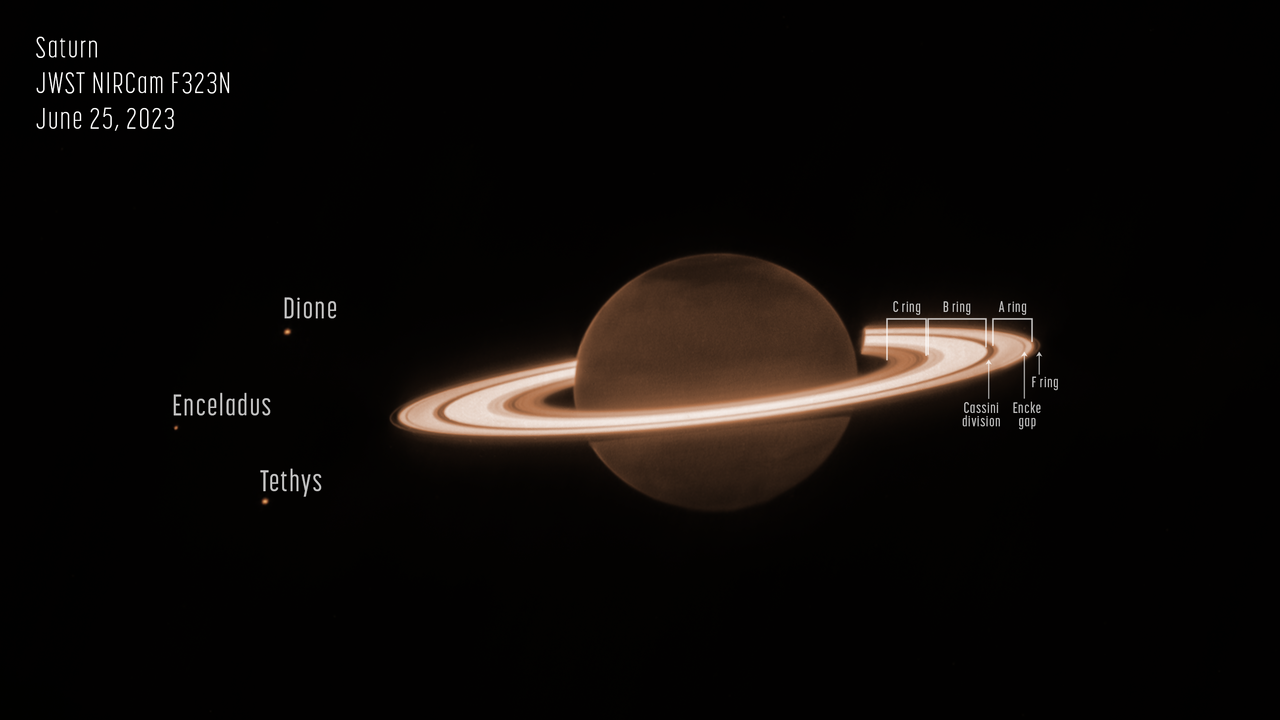Last week, a spectacular image of Saturn was published by the JWST team. It shows the sparkling rings of the giant planet almost floating by themselves. Saturn itself doesn’t really shine in infrared. A different release shows a little bit more of the ringed planet this time around, as well as showing more details in the rings – and three moons also show up in this gorgeous composition.
The image was taken by JWST’s NIRCam (Near-Infrared Camera). It clearly shows planetary details and Saturn’s ring system. The moons Dione, Enceladus, and Tethys are visible to the left of the planet. The snap is just one of deeper observations of the planet that can see Saturn’s fainter rings (not visible in this photo) including the thin G ring and the diffuse E ring. This latter one is produced by the plumes released by Enceladus, like the big one spotted by JWST a short time ago.
The annotated image of Saturn, its rings, and moons.
Image credit: NASA, ESA, CSA, Matthew Tiscareno (SETI Institute), Matthew Hedman (University of Idaho), Maryame El Moutamid (Cornell University), Mark Showalter (SETI Institute), Leigh Fletcher (University of Leicester), Heidi Hammel (AURA)
Saturn looks dark when this filter is used due to methane, which absorbs sunlight. The rings and the moons, on the other hand, get a chance to shine once the spotlight is removed from the planet. Despite the darkness, there are plenty of details to be gathered from the observations, including seasonal changes in the hemispheres. The polar regions change color as the planet goes around the Sun, and these new infrared observations provide never-before-seen details of these periodic changes.
These JWST observations are just the beginning of what might be gathered on the ringed planet, its atmosphere, and its moons.
Source Link: JWST Captures Saturn As You’ve Never Seen It Before
